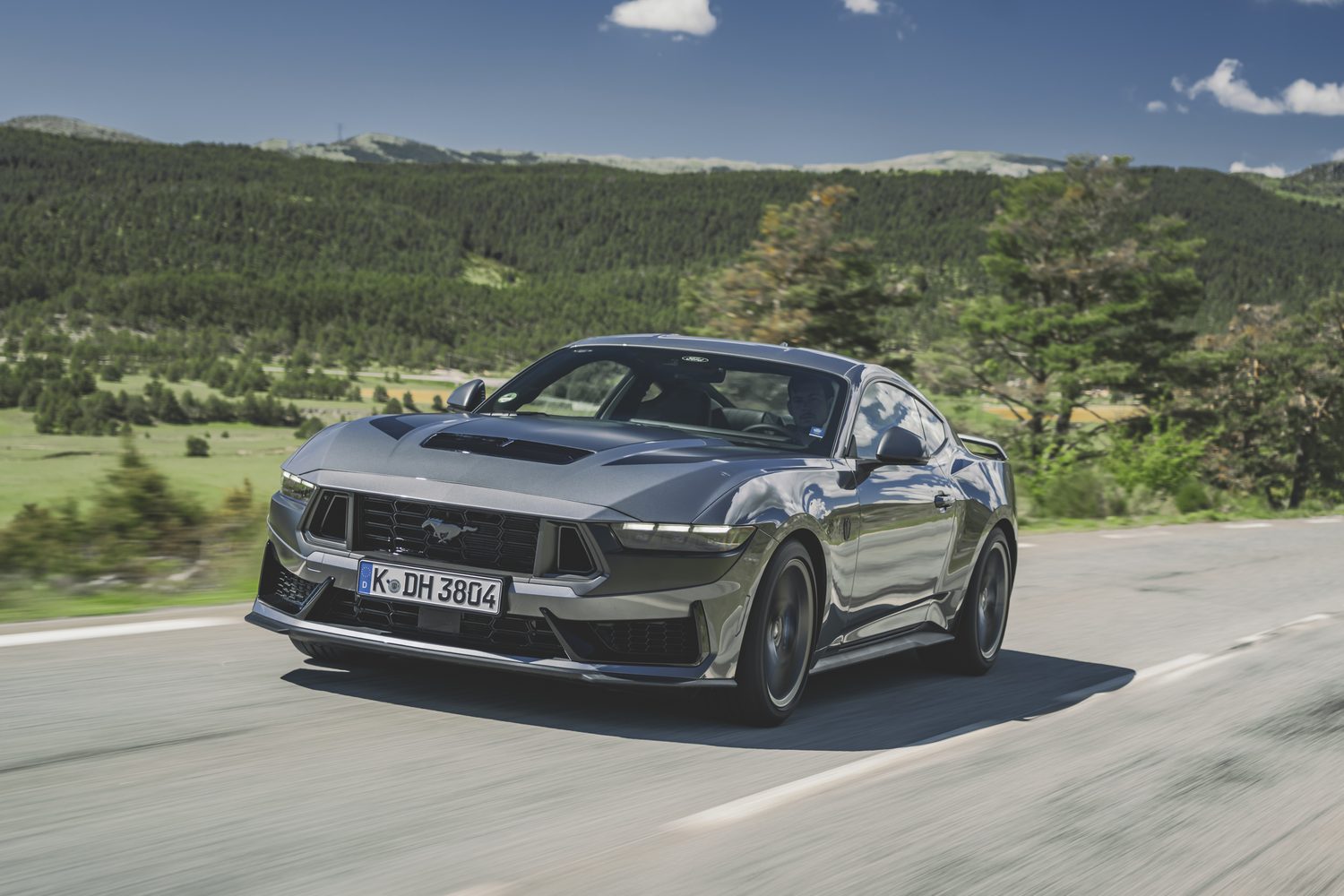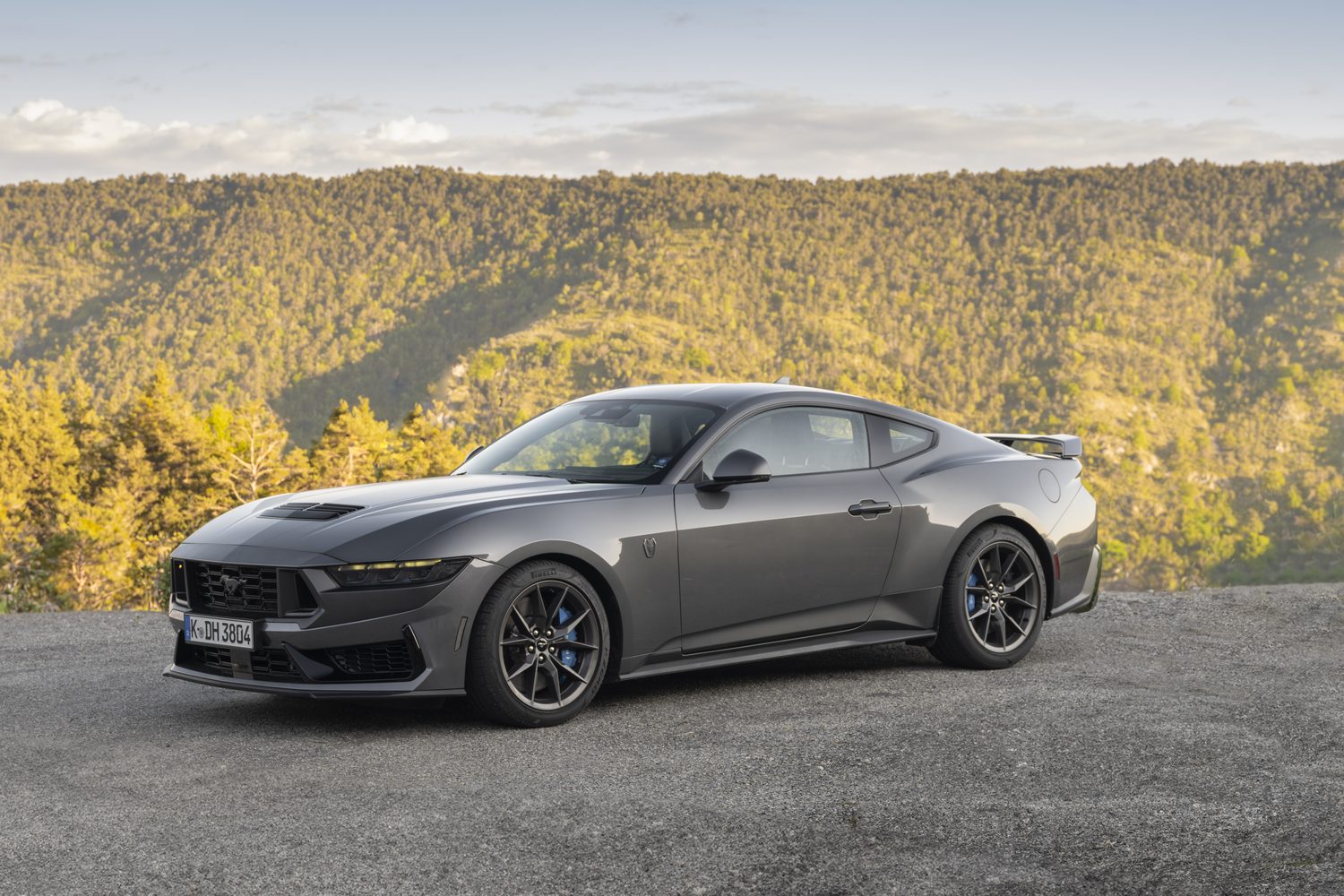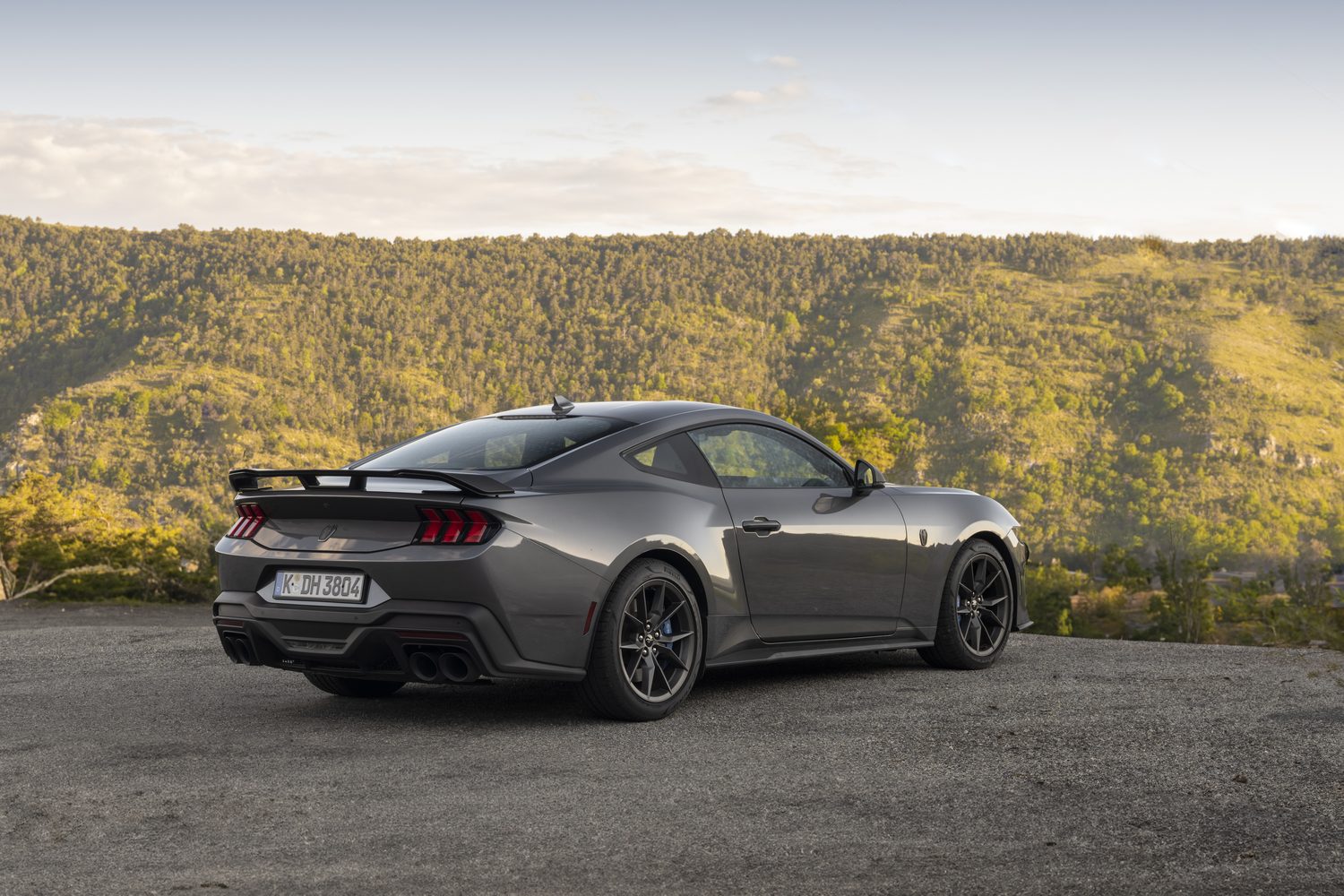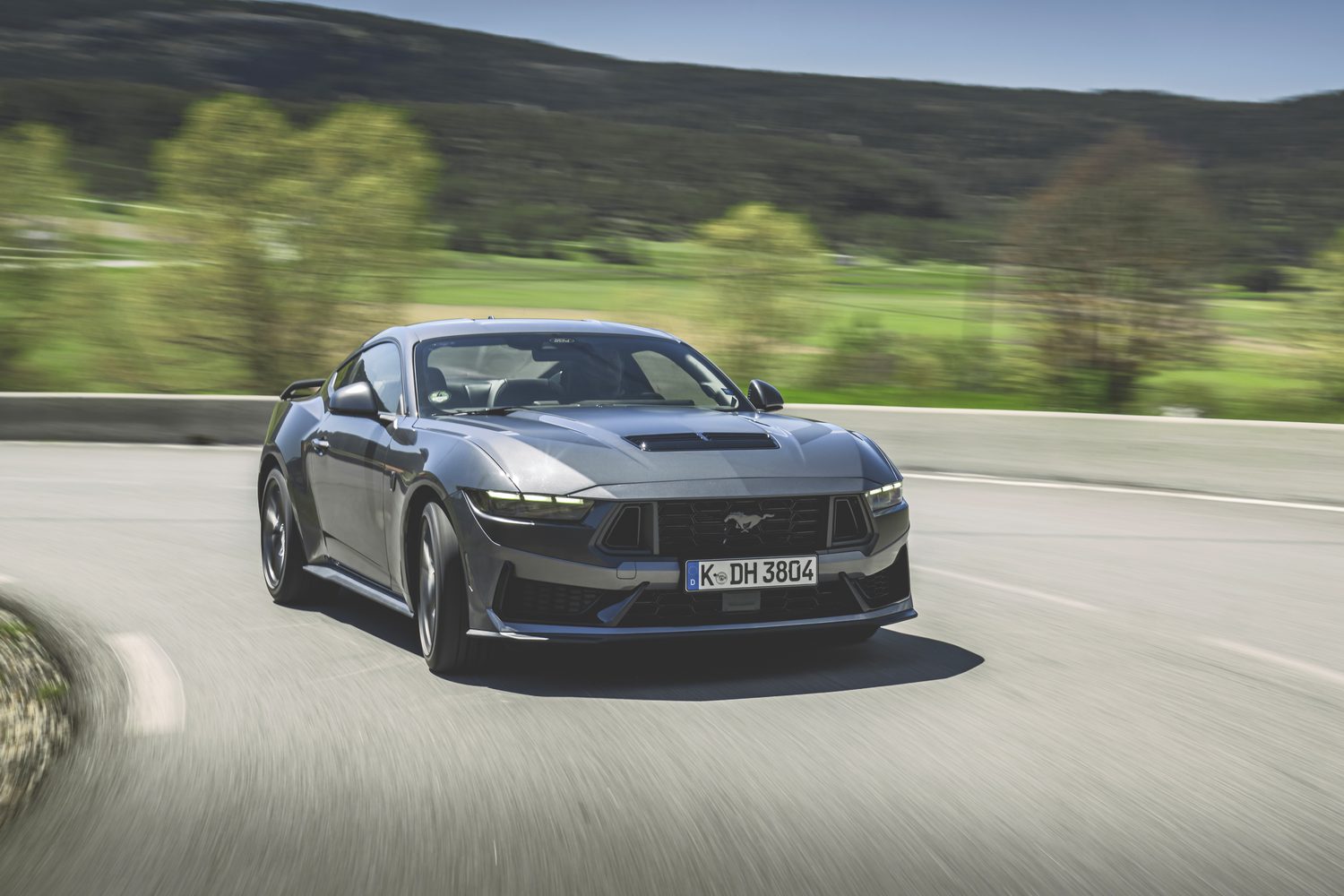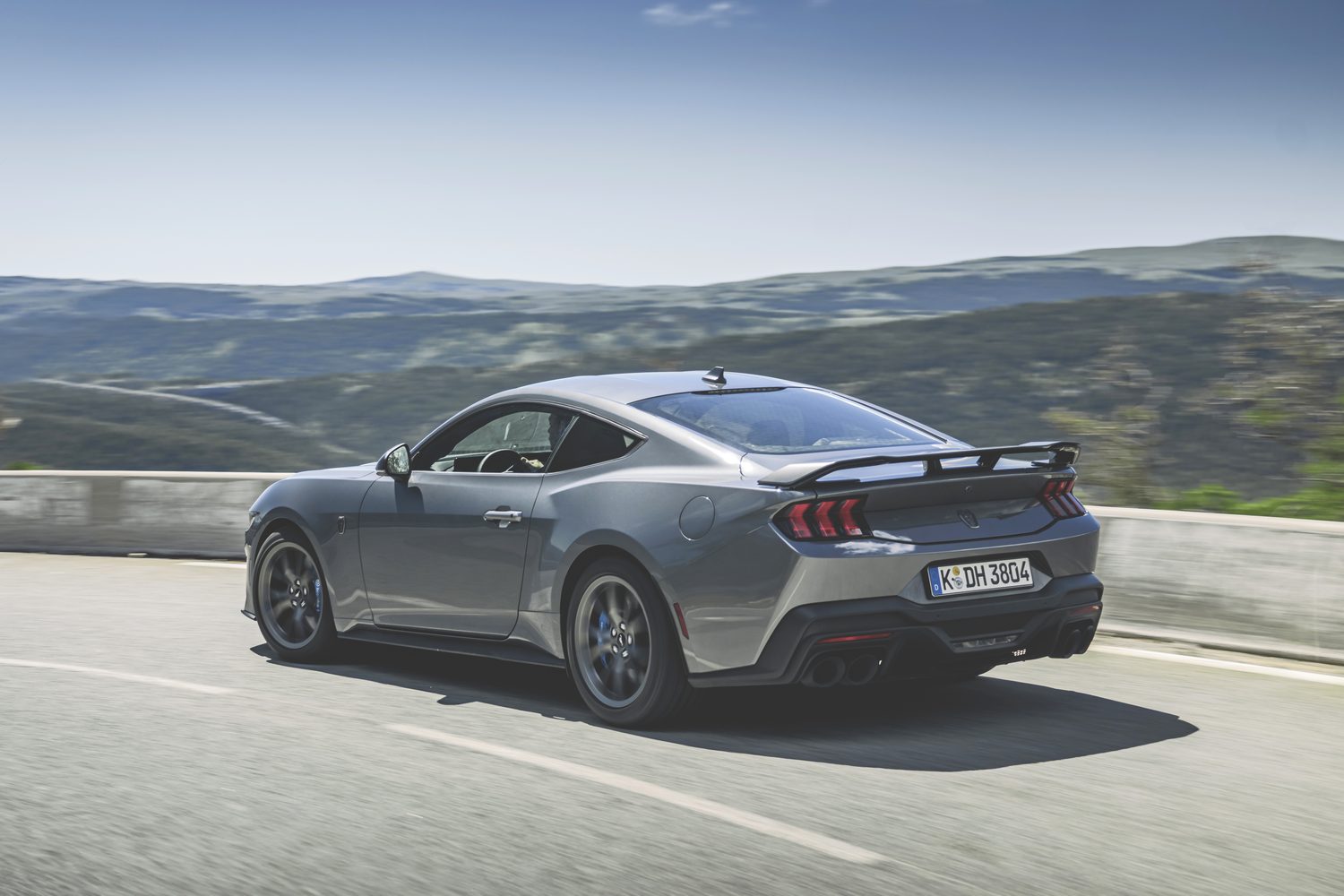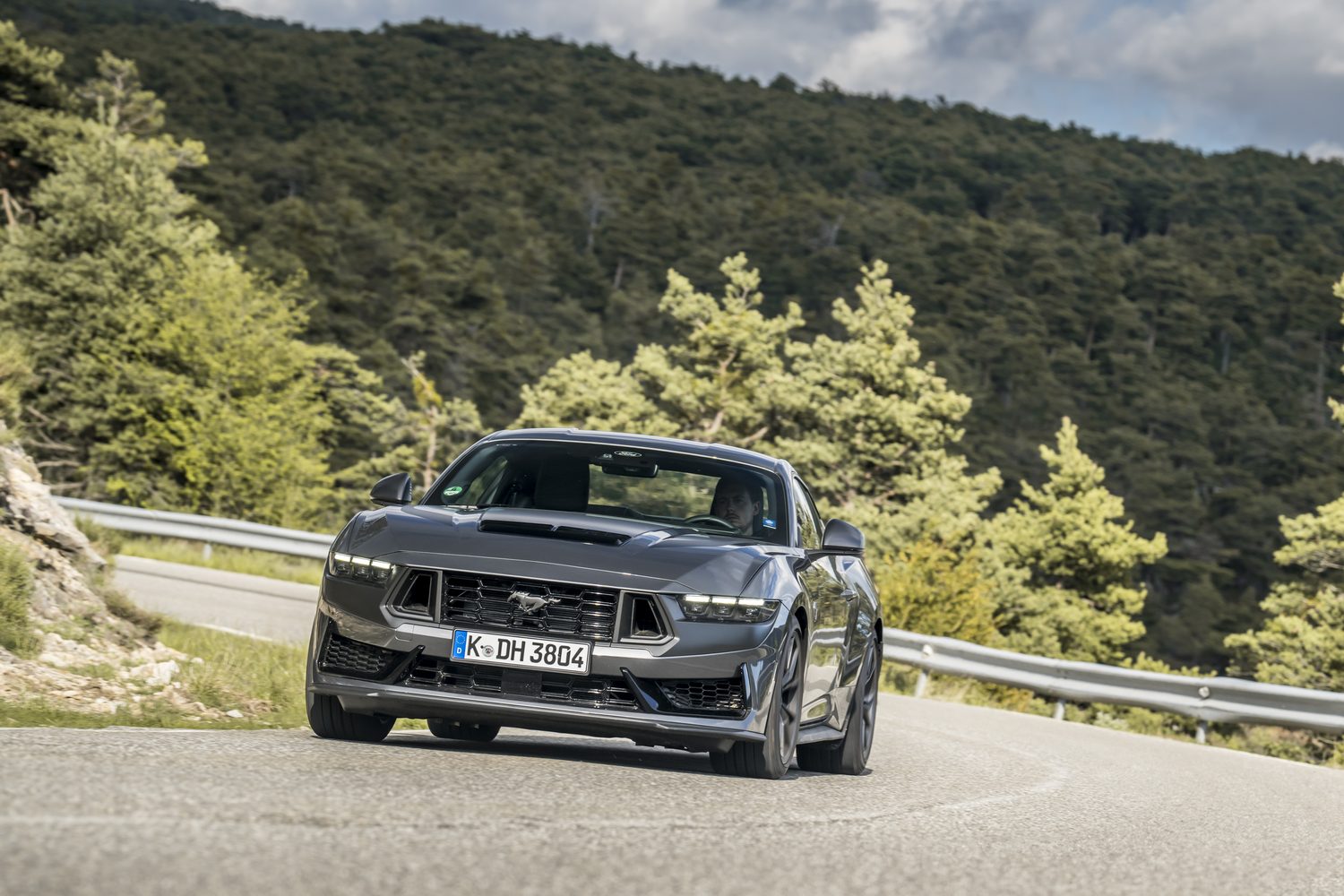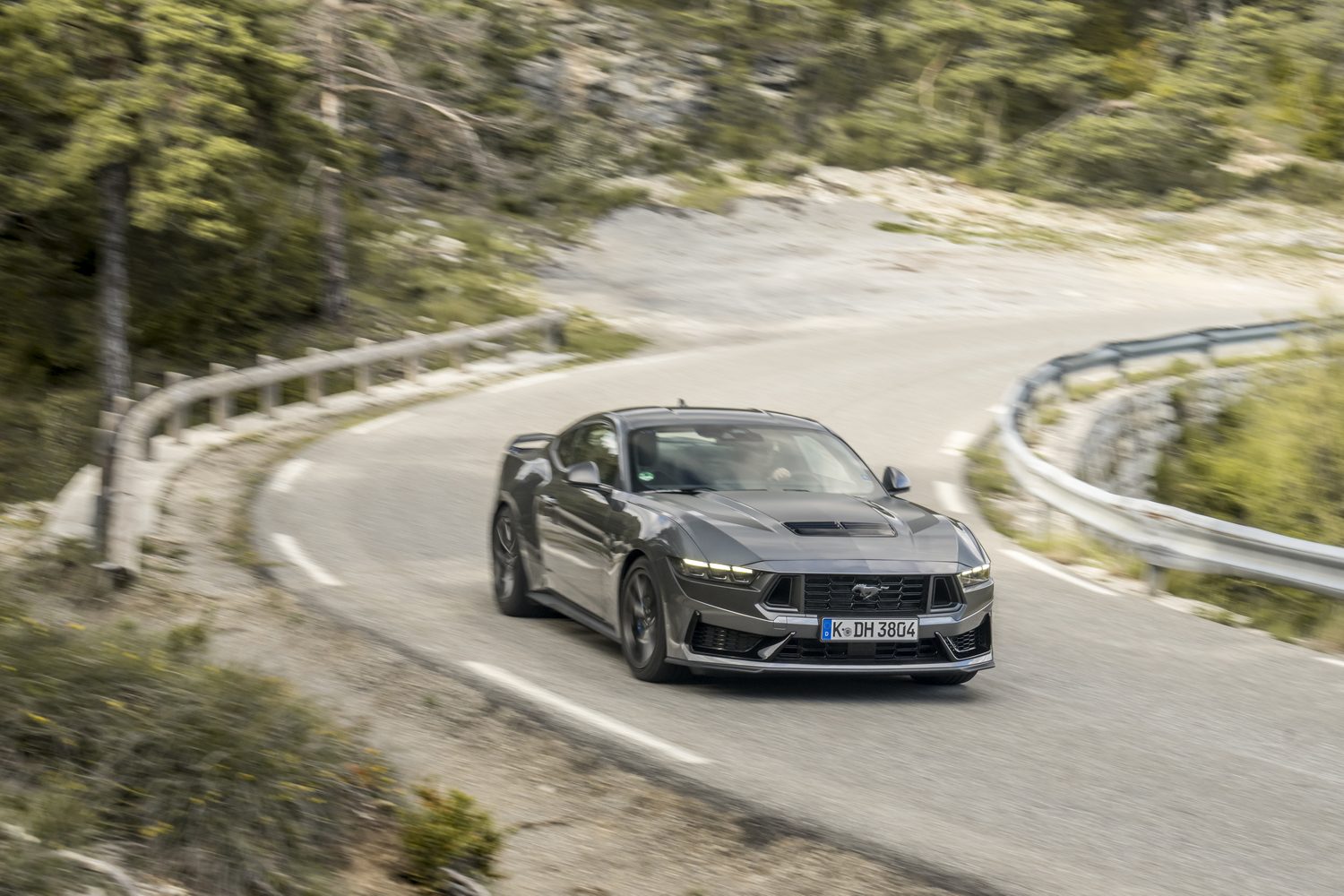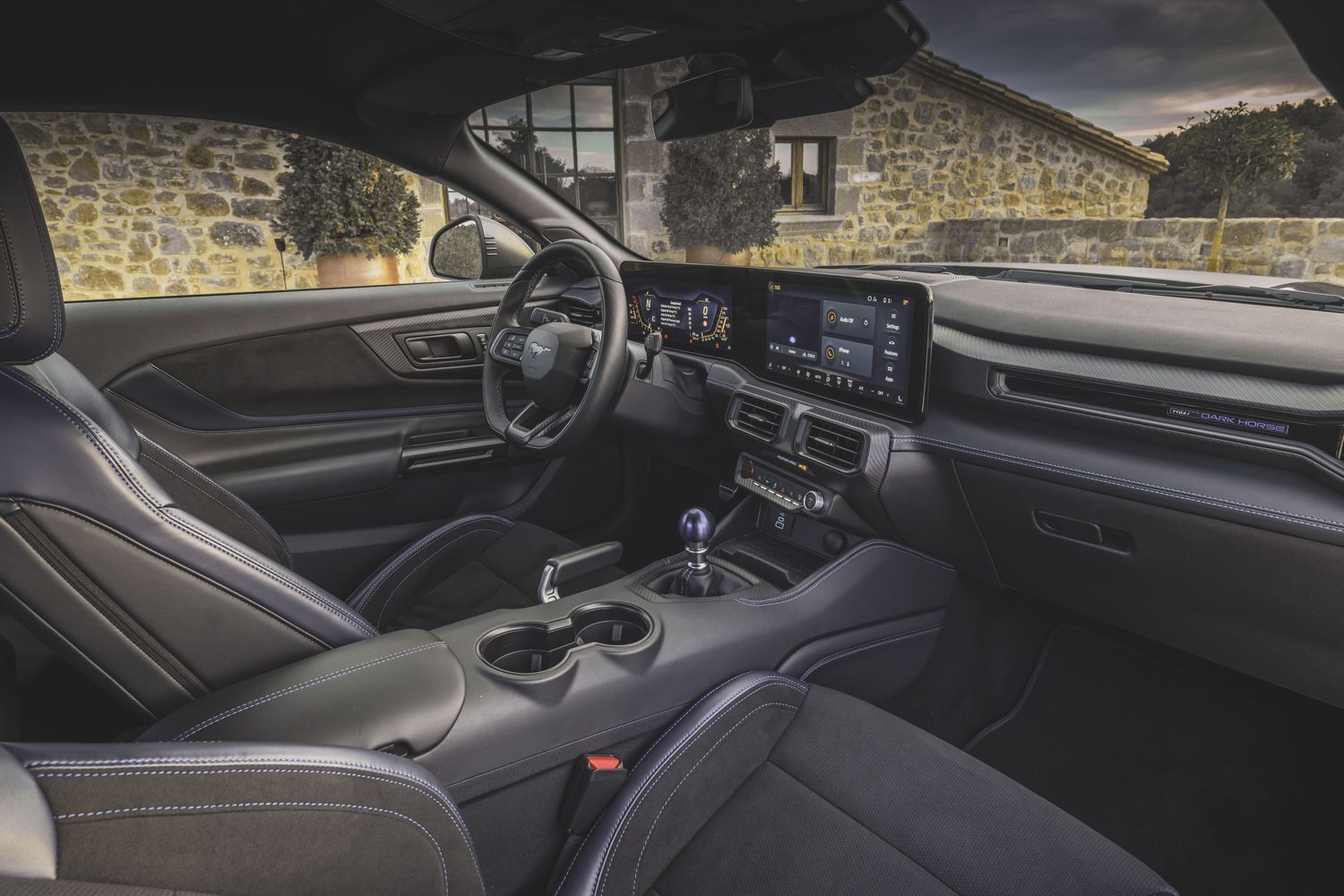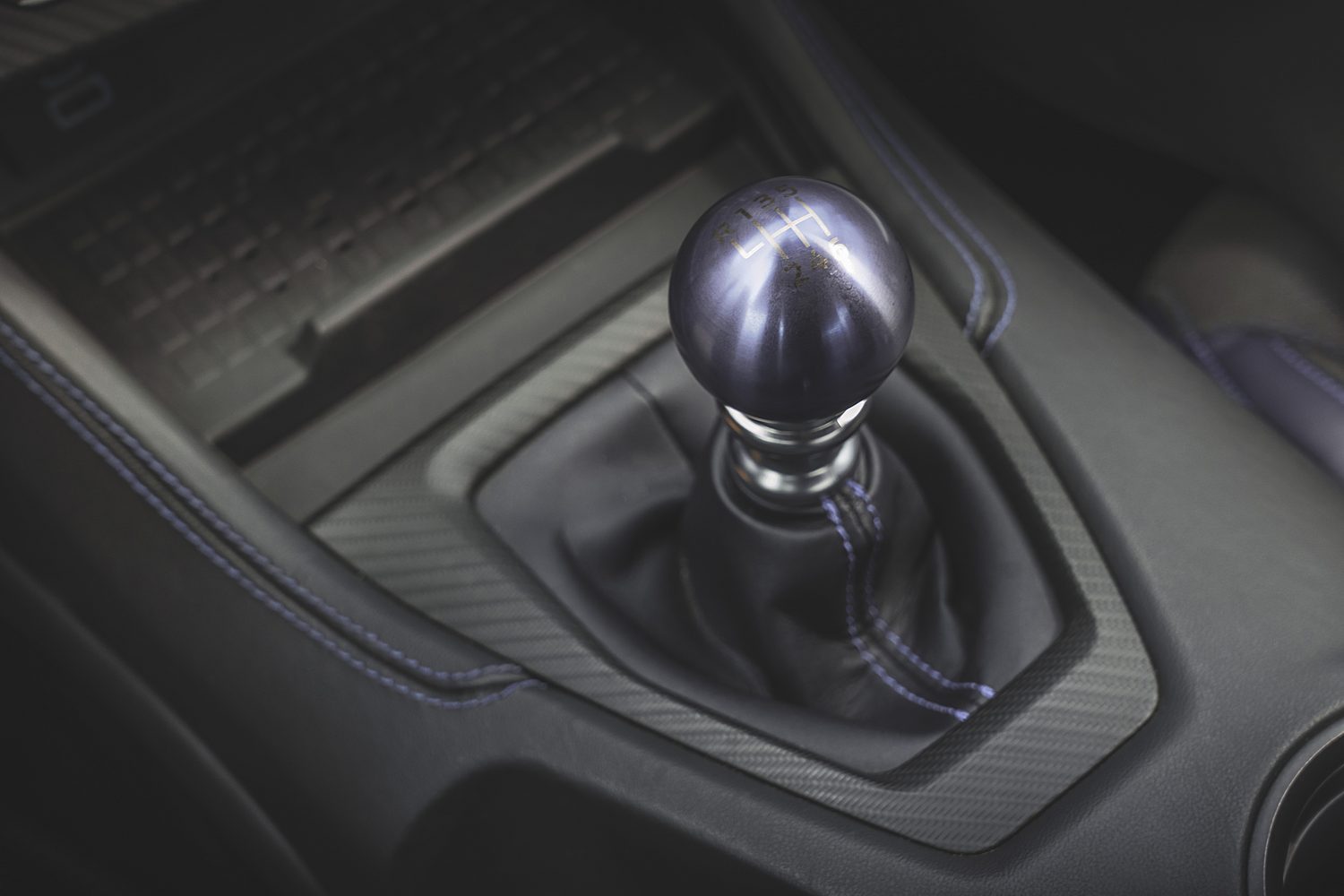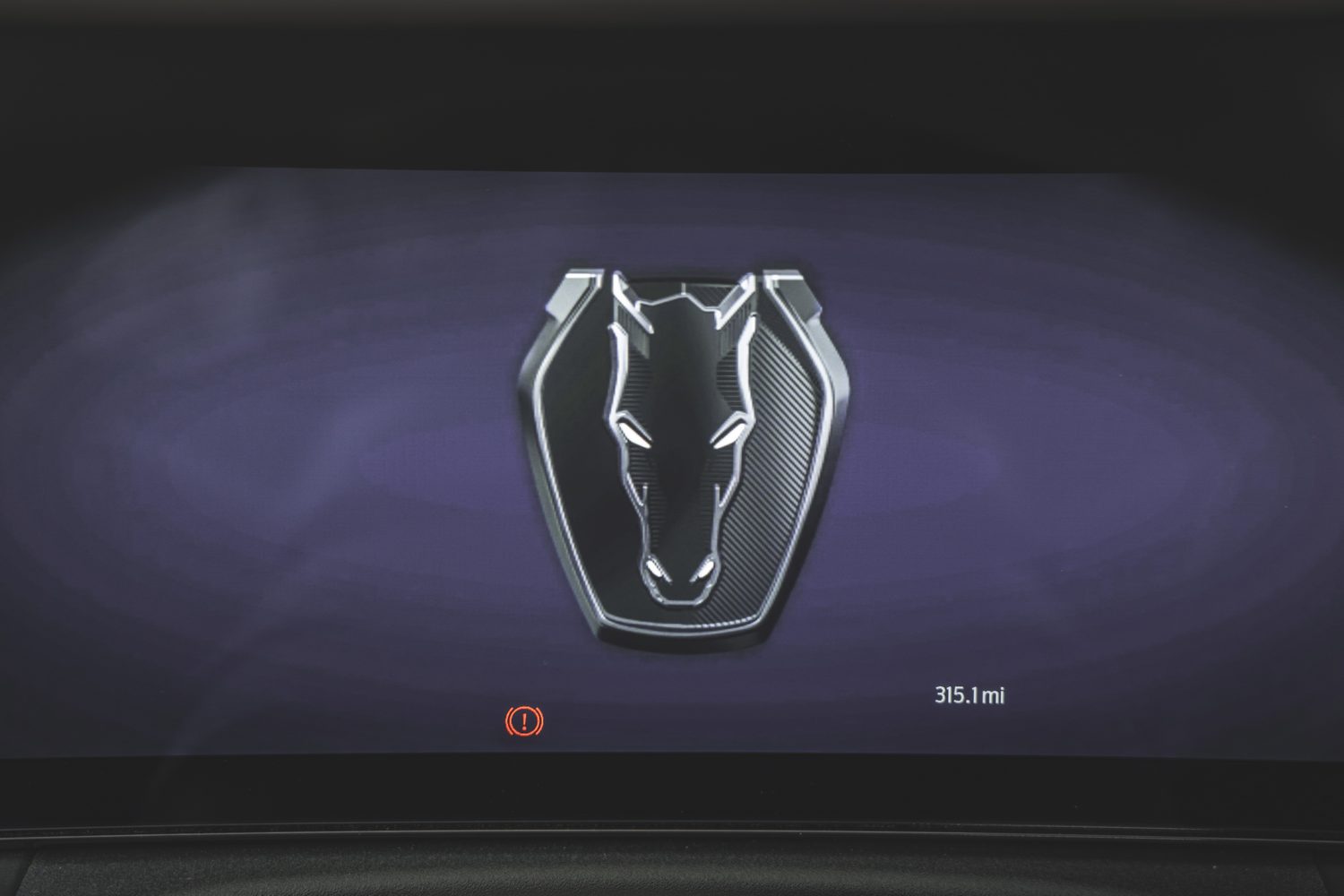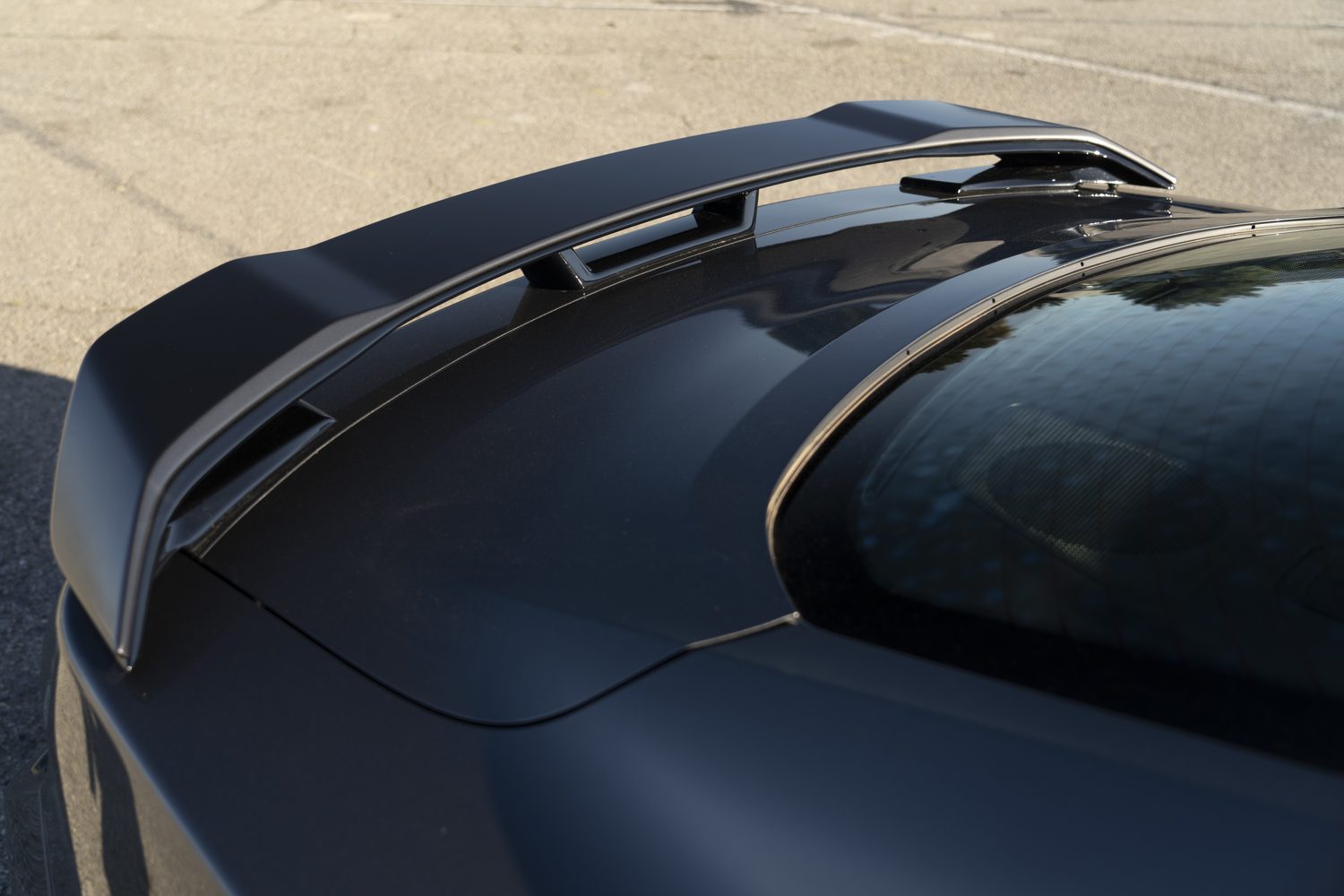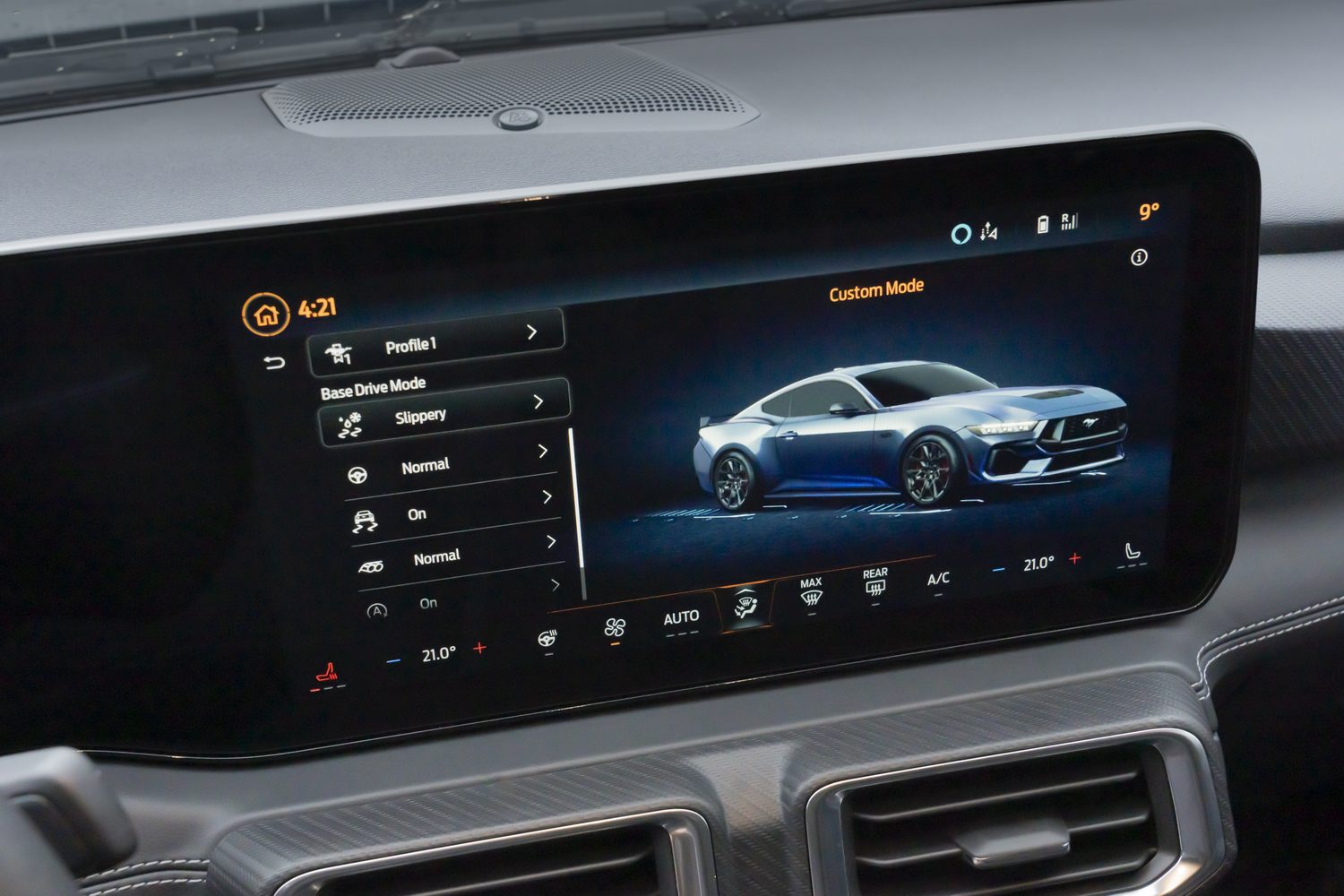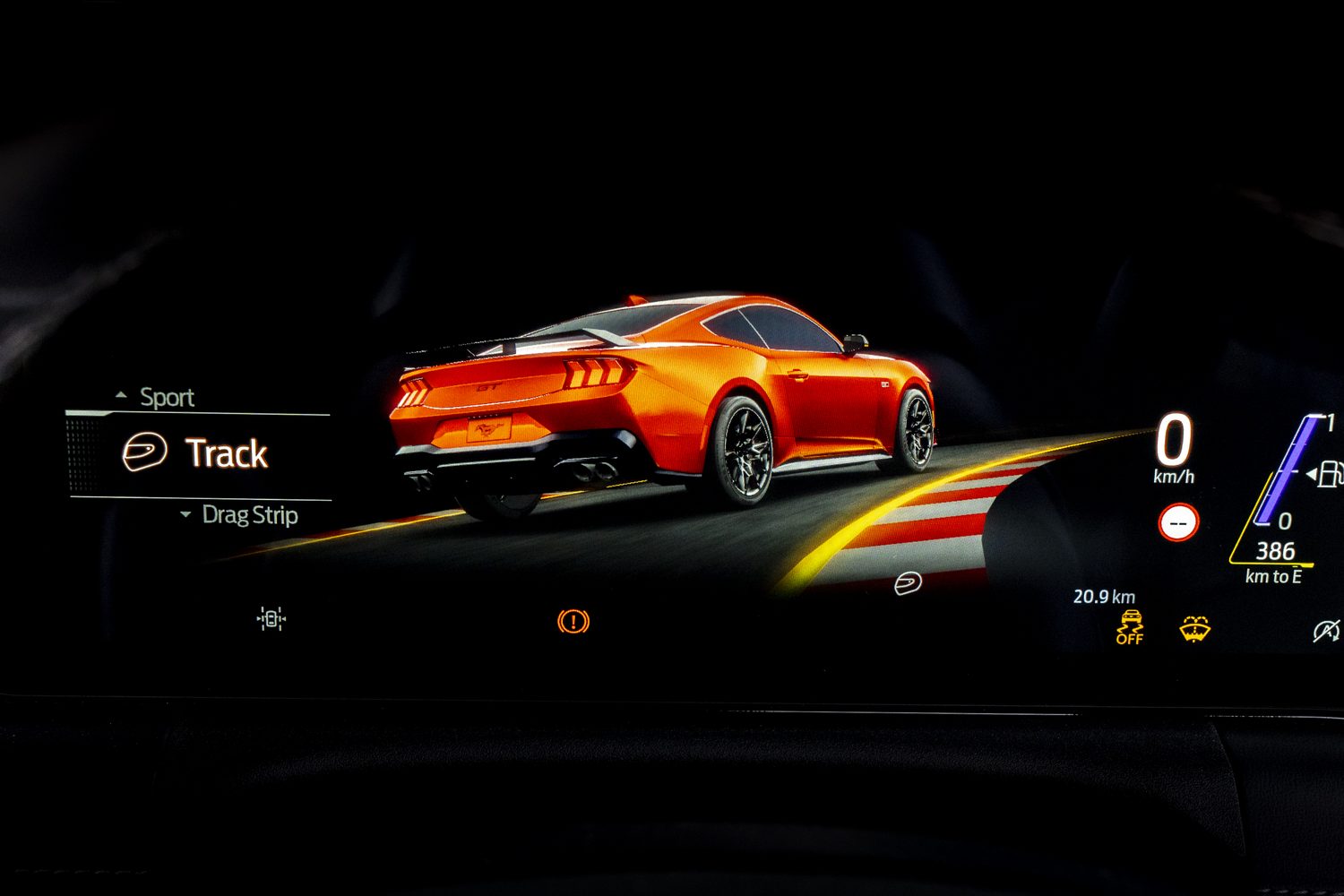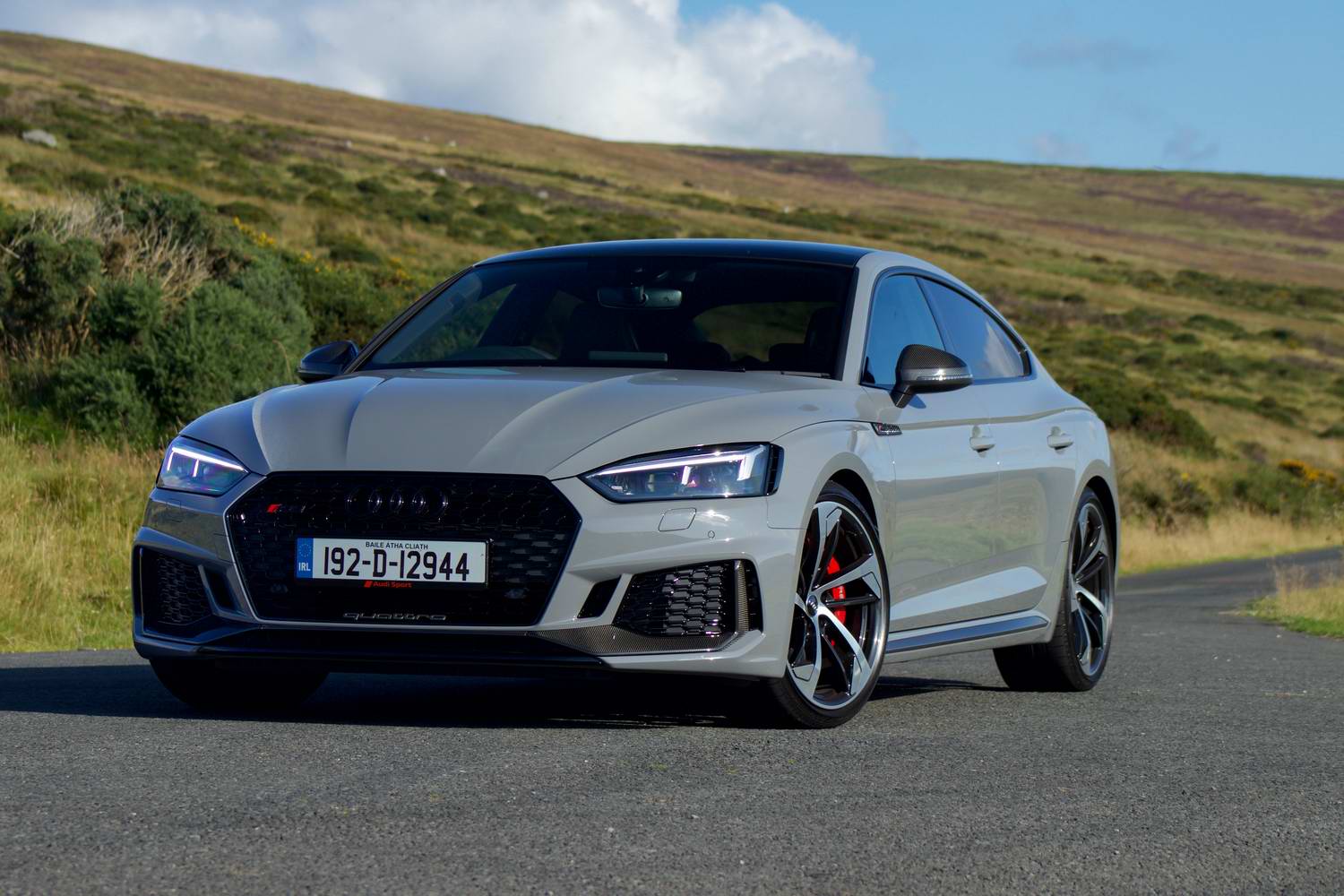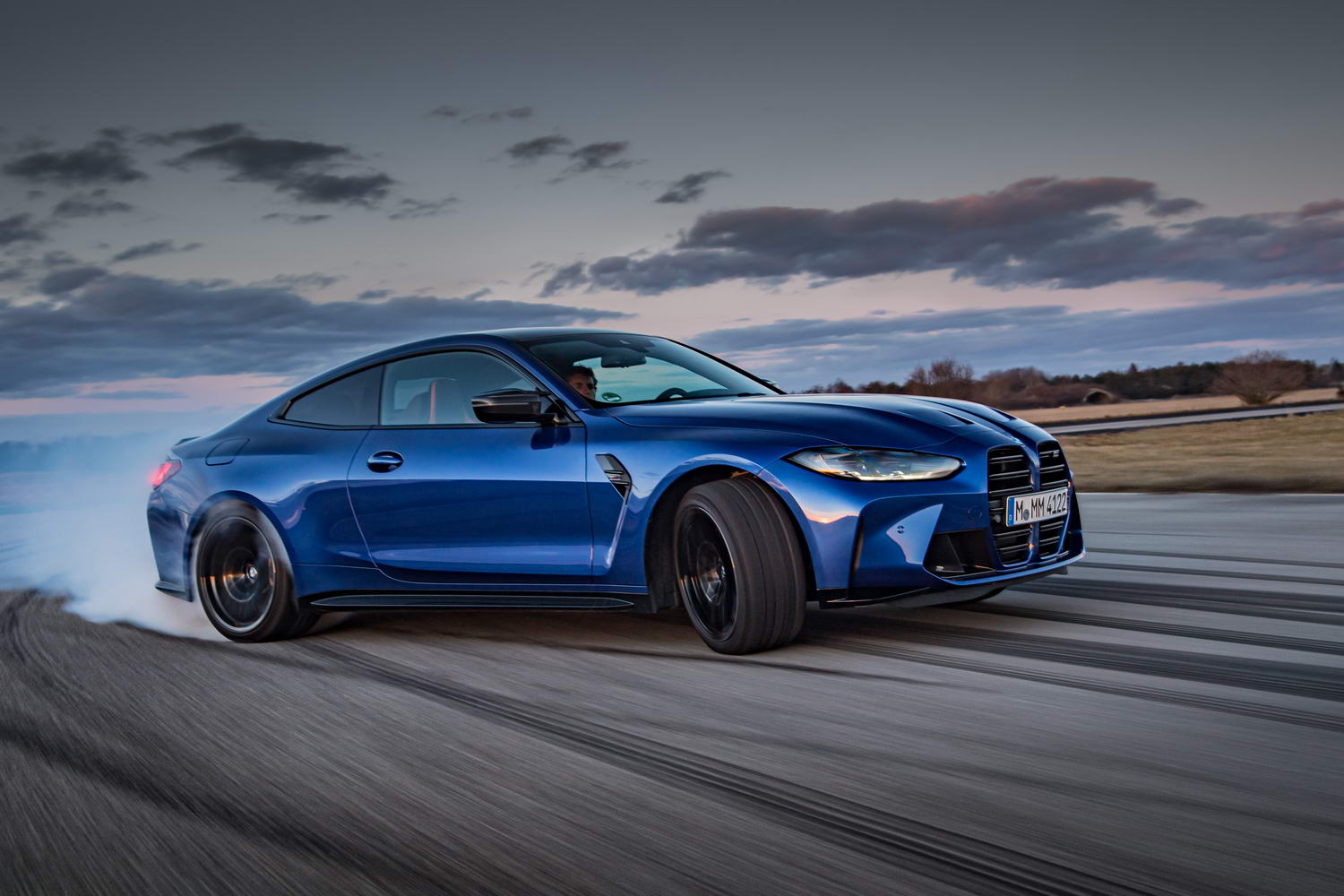In this ecological age, with the Mach-E electric SUV in existence, one might think Ford’s legendary Mustang would have retired after its sixth generation. But no, here we are, ready for the 60th anniversary of the original ‘Pony Car’, with an all-new Mk7 to enjoy. This time, it’s V8-only, and the pinnacle of the launch lineup is the mean and moody, track-focused Dark Horse model. So, does it come across as an outdated relic in today’s world, or is there more to the Mustang than initially meets the eye?
In the metal
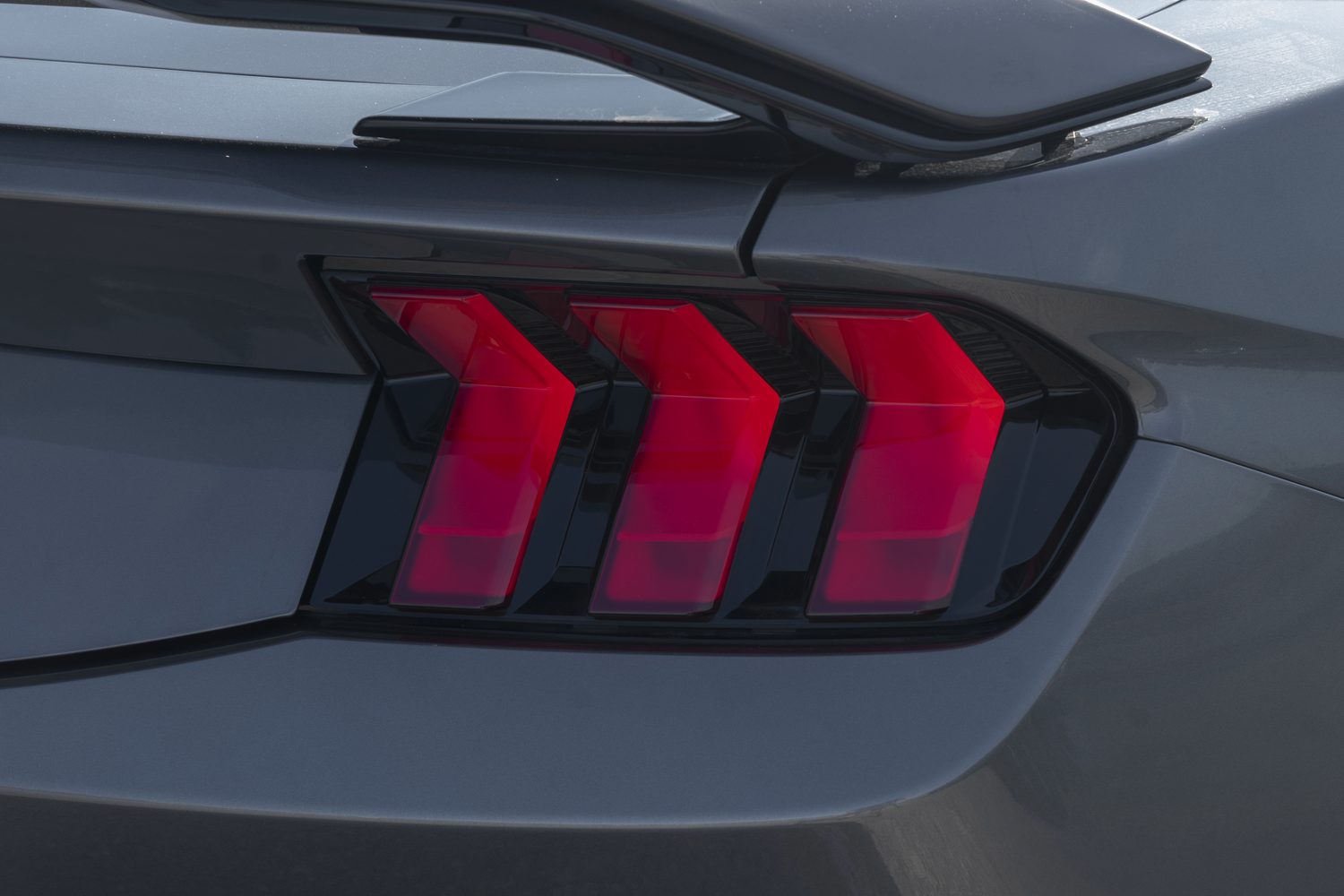
The new Mustang is a little longer and taller than the car it supersedes, although it’s no wider. And while its styling is familiar from the previous two generations, both of which took plenty of aesthetic inspiration from the original car (built from 1964 until 1973, although - frankly - Ford ruined its appearance with a flabby-looking redesign in 1971), there’s enough about the latest version to make it stand out.
Still sold as both a Fastback (coupe) and Convertible (soft-top), all models have triple-bladed front and rear lights. For the former, it’s a detail rendered in the LEDs themselves and the indicators in the sleek clusters, but at the back it’s the traditional Mustang light design. Other trademark features, such as glorious flared-out rear haunches and the sweeping roofline of the Fastback, are retained, with every model running on at least 19-inch wheels and sporting quad exhaust pipes at the back.
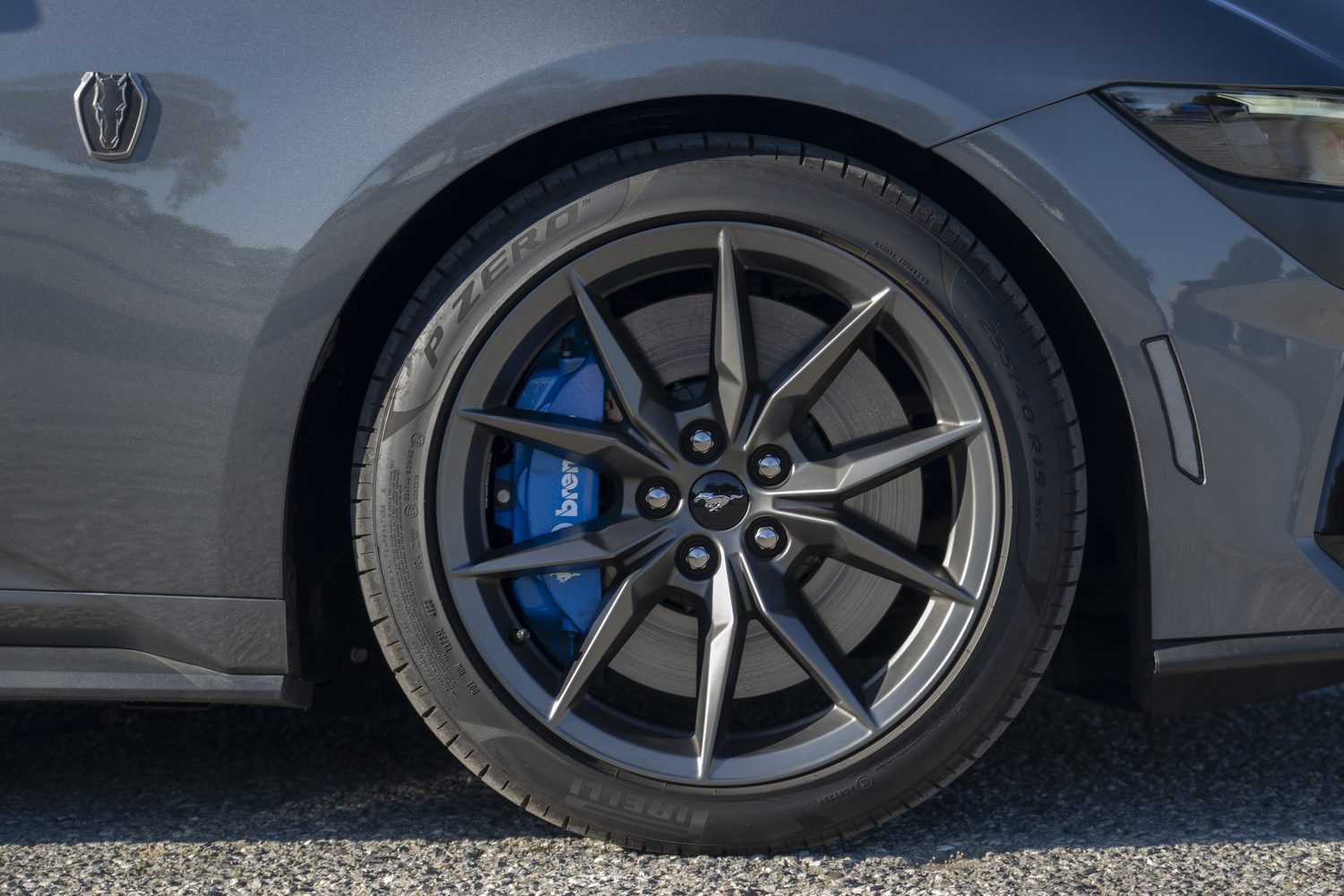
The Dark Horse, though, takes things a step further, with various logos and iconography - principally, this version’s fresh model-specific face-on horse graphic - dotted about to inform you it’s a little more special than a ‘regular’ GT. Beyond that, it also has big intakes in the front grille to channel more cooling air to the V8 engine behind, while there’s another vent on the bonnet to suck hot air out of the engine bay (all new Mustangs have this), and then bits of black-panel detailing, a meatier lower body kit and bumpers, a more aggressive front splitter and a big spoiler perched on the boot. What with its reshaped diffuser to accommodate the larger-exit active exhaust system, the Dark Horse strikes a mean stance even when it’s just parked - although that’s partly to do with a big, horizontal ‘cut’ in the rear, which in profile makes the car look like its moving fast even when it’s standing still.
Inside, there’s no mistaking the changes. Ford canvassed owners of previous models and, in attempting to coax in a younger Mustang-buying clientele in the process, it found that people wanted far better technology within. To that end, the Mustang’s cabin is now dominated by what its manufacturer calls a ‘fighter jet fascia,’ although we’d just say it’s a widescreen, heavily digitised affair. There’s a 12.4-inch display in front of the driver, which integrates nicely into the main 13.2-inch touchscreen for the latest ‘SYNC 4’ infotainment system. However, if you’re a fan of the traditional Mustang’s ‘dual-cowl’ interior, this vast, flat-panel array might take you aback.
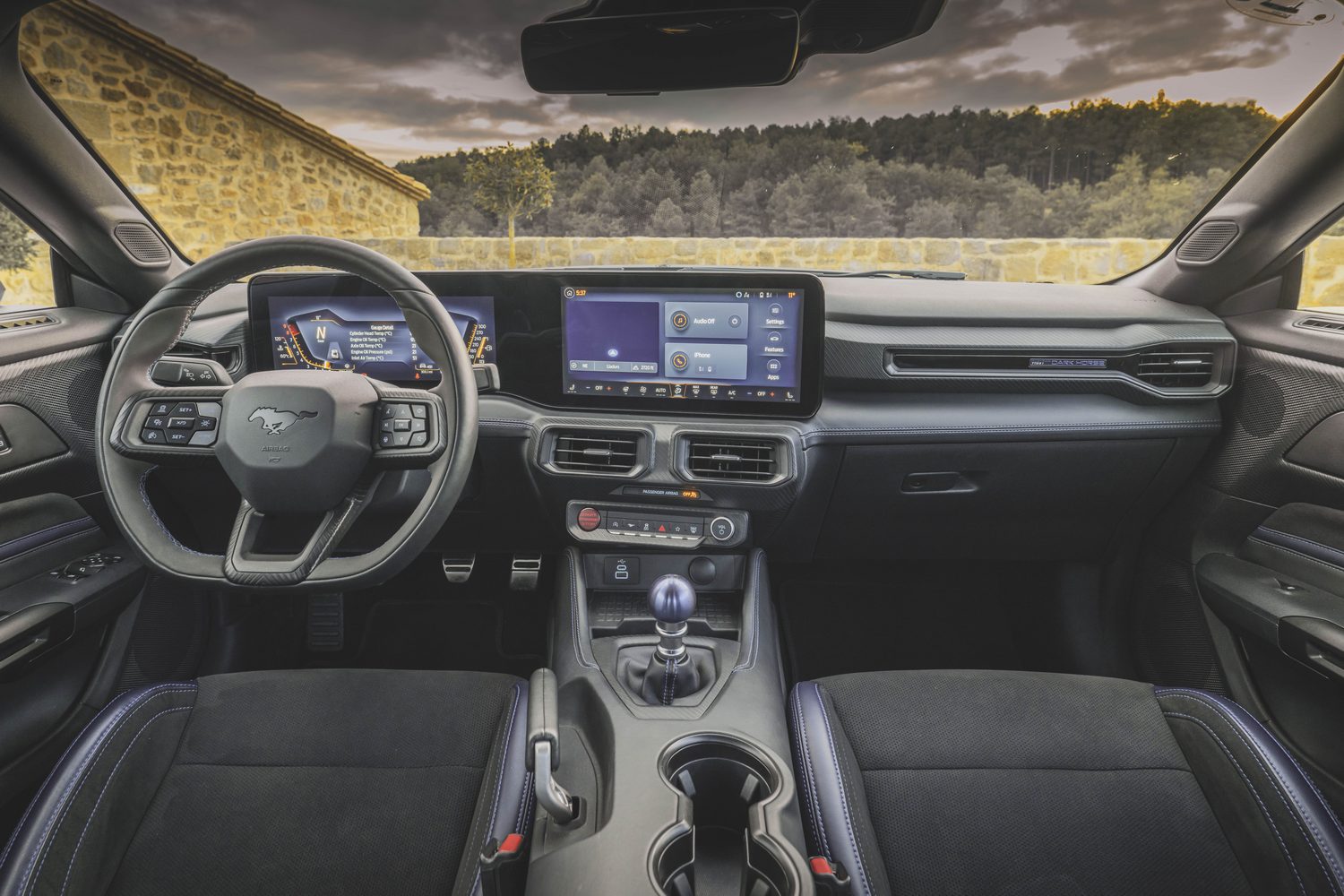
Once you’ve got over that shock, you’ll find it all works well and crisply, although the climate controls are no longer separate and are now situated on the screen. It has also necessitated a change to the switchgear on the centre console, with the old ‘rocker’ switches replaced by a plainer panel of six buttons, including the Mustang-logoed control which leads you into some of the more exciting, model-specific submenus of the infotainment - including the chance to make the dials in the cluster like those of the Fox-body third-generation Mustang built from 1979 through the eighties. Retro.
Ford has also moved various functions, including the drive mode switch, up onto a steering wheel which no longer has an old-fashioned-looking round centre boss, so it’s quite a change inside overall. Material quality throughout also seems to have improved, although if you go searching high and low you’ll find some plastics in the Ford that you wouldn’t in an equivalent Audi or BMW, for example, but while the 381-litre boot is admirable for a car of this size, the rear seats continue to be occasional-use items only habitable by smaller folk. It’s more of a 2+2 than a full four-seater within.
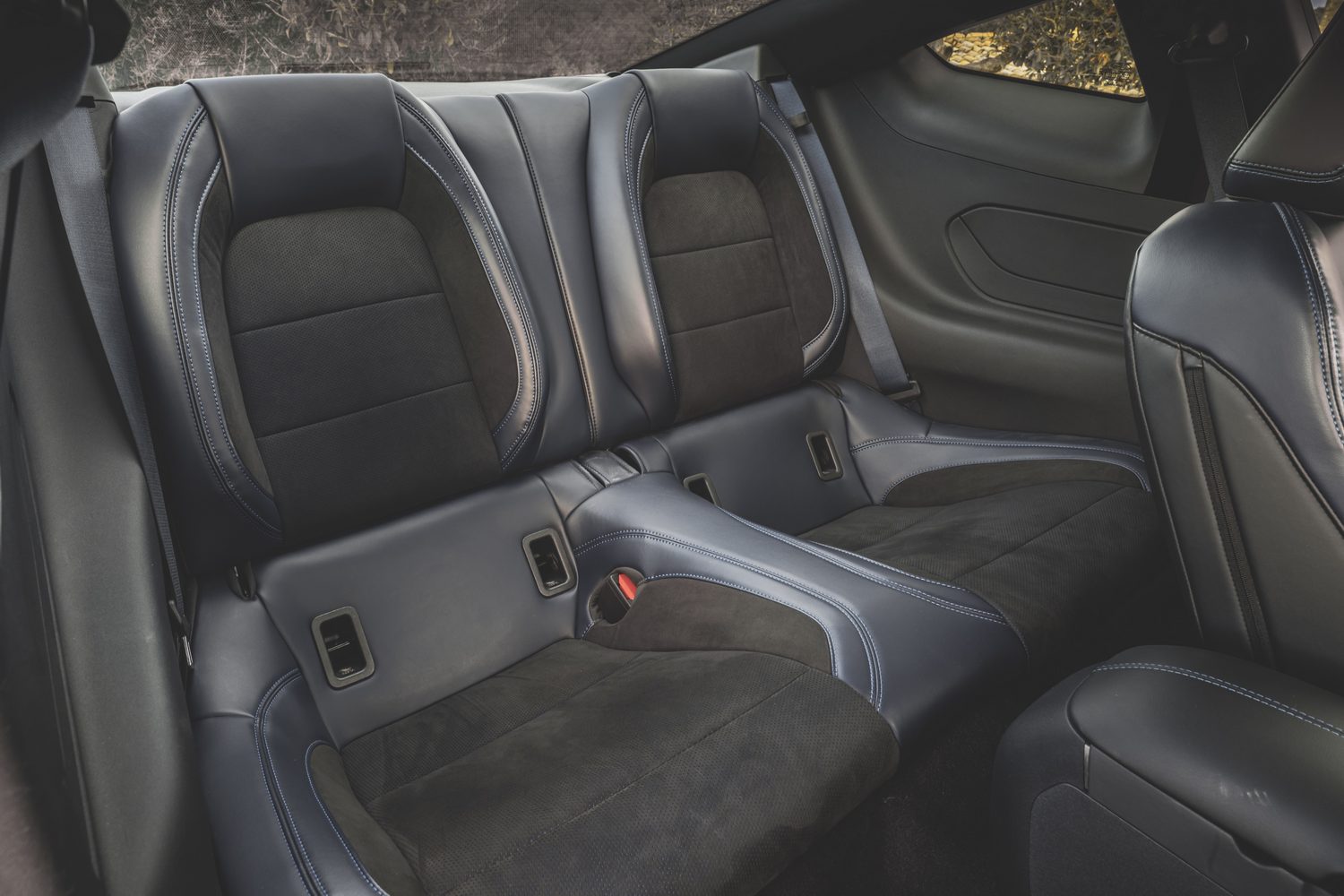
Driving it
In Europe, Ford has dropped the old turbocharged 2.3-litre four-cylinder EcoBoost engine for this latest ‘Pony Car’ outing - in truth, it did this in the previous-generation Mustang some years ago due to slow sales, so it saw no reason to bring this cylindrically challenged option back for the new car.
Which means, somewhat controversially (or correctly, depending on how you feel about it), your only engine choice is the 5.0-litre, normally aspirated ‘Coyote’ V8. Ford says it has considerably reworked this into a fourth-generation unit, thanks to changes to the bore and stroke, and the fitment of dual air intakes rather than the solitary item it had before, but as seems to be common these days, we are on the end of an emissions-based deficit. US models have more power because their exhausts aren’t saddled with petrol particulate filters, so - in the case of this Dark Horse - it has 500hp on the other side of the Atlantic when it makes do with 453hp here; that’s less than the old Bullitt and Mach 1 Mustangs used to have in the previous generations, incidentally, which won’t please those who want to identify the march of automotive progress solely in terms of ever-increasing horsepower outputs.
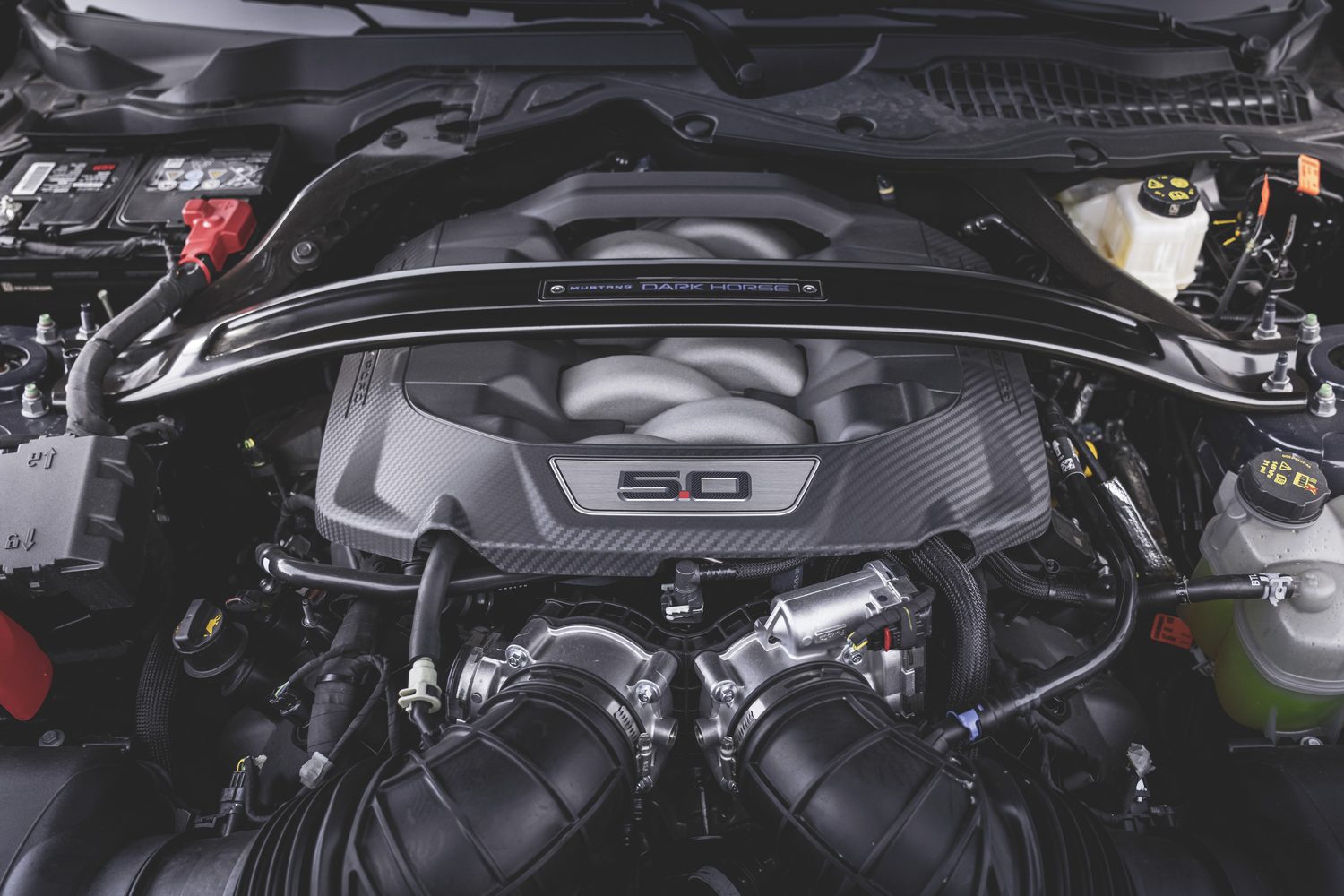
Nevertheless, its spec is pretty serious, as it has its own special tuning of the MagneRide dampers to make it sharper and more composed on track, while the Brembo brakes have been uprated from four-pot items previously to six-pot affairs. There’s the lovely active exhaust to bring the best possible noises to the Dark Horse, it employs a Torsen limited-slip rear differential at the back and it has an additional 7hp over the regular V8 GT. That means with a manual gearbox, it’s only a tenth-of-a-second quicker to 100km/h from rest than the GT, the Dark Horse running a 5.2-second sprint, but with an auto fitted it’s the most accelerative new Mustang by half-a-second with a time of 4.4 seconds.
Another feature the new Mustang has is a pothole mitigation system. This monitors the steering, suspension and brakes, and determines if one or more of the car’s wheels is about to encounter a serious depression in the road surface. If it does, then it ‘holds’ the alloy up to prevent it crashing into said pothole, which means less chance of potential damage to the wheel and less thumping about of passengers inside.
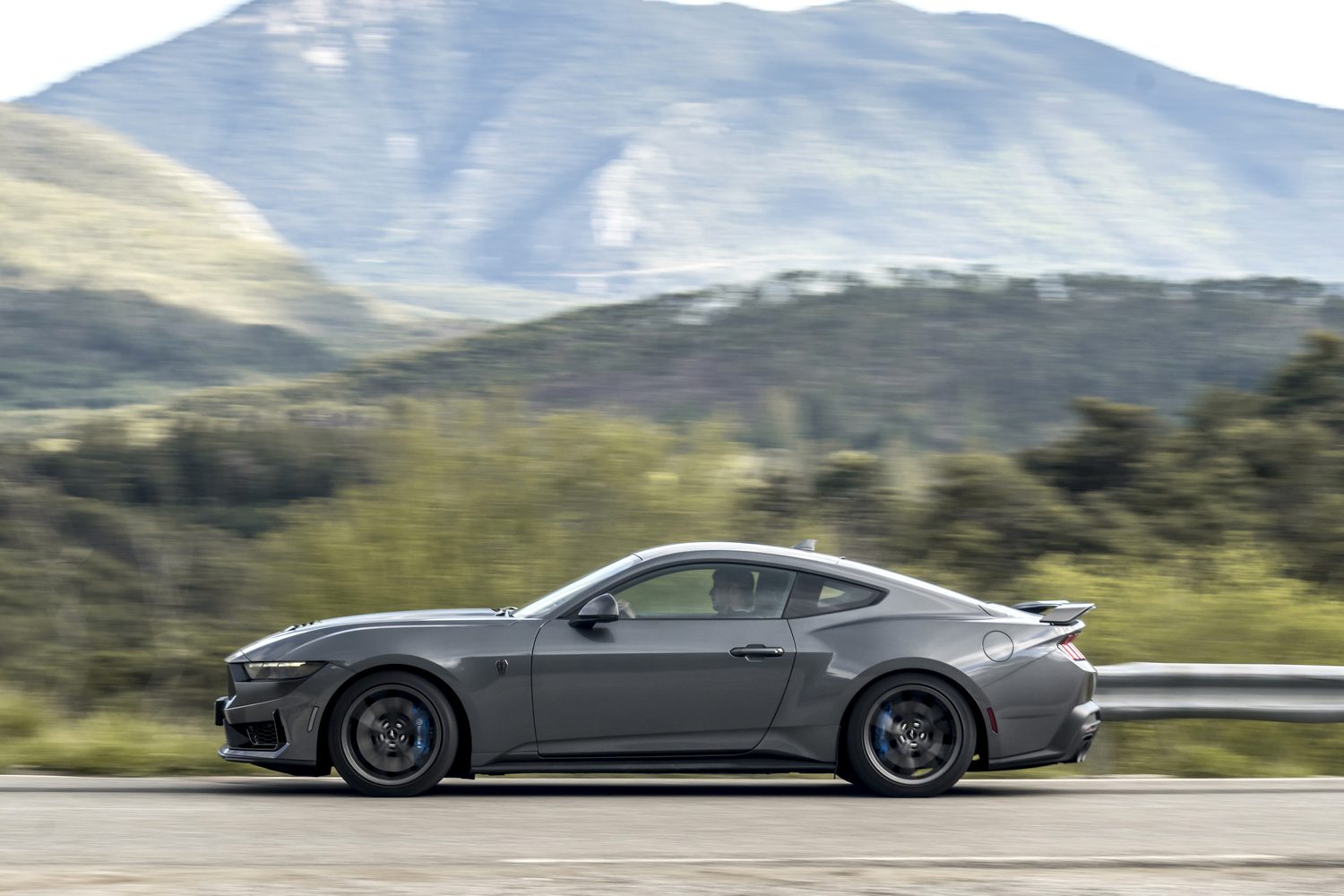
That said, on a particularly lumpen section of tarmac on our first drive test route, we weren’t that impressed with the Dark Horse’s low-speed comfort. In fact, it felt too sharp and cumbersome, perhaps as it was trying so hard to prevent the alloys banging into craters that it forgot to suspend the body in the most comfortable fashion possible. That’s a supposition, naturally, but otherwise there’s no doubt about it: the previous Mustang, even in its sportier applications like the Mach 1, rode better about town than the new one does, Dark Horse specification or not.
However, as is so often the case these days, once speeds rise and the road surfaces become average or better, everything in the Dark Horse settles down to a comfortable, accommodating gait; it’s like it is optimised to do a minimum 80km/h. And there’s also no way of denying that the firm low-speed ride of the new Ford speaks volumes about the fact it is sharper to drive than the car it replaces. The steering is a little light, perhaps to mask the Mustang’s 1.8-tonne bulk and sheer physical presence, but in terms of the superb body control, deft rear-drive balance and general grip and traction of the thing, the Dark Horse is magnificent fun to drive when you’re on the right road - or track of course.
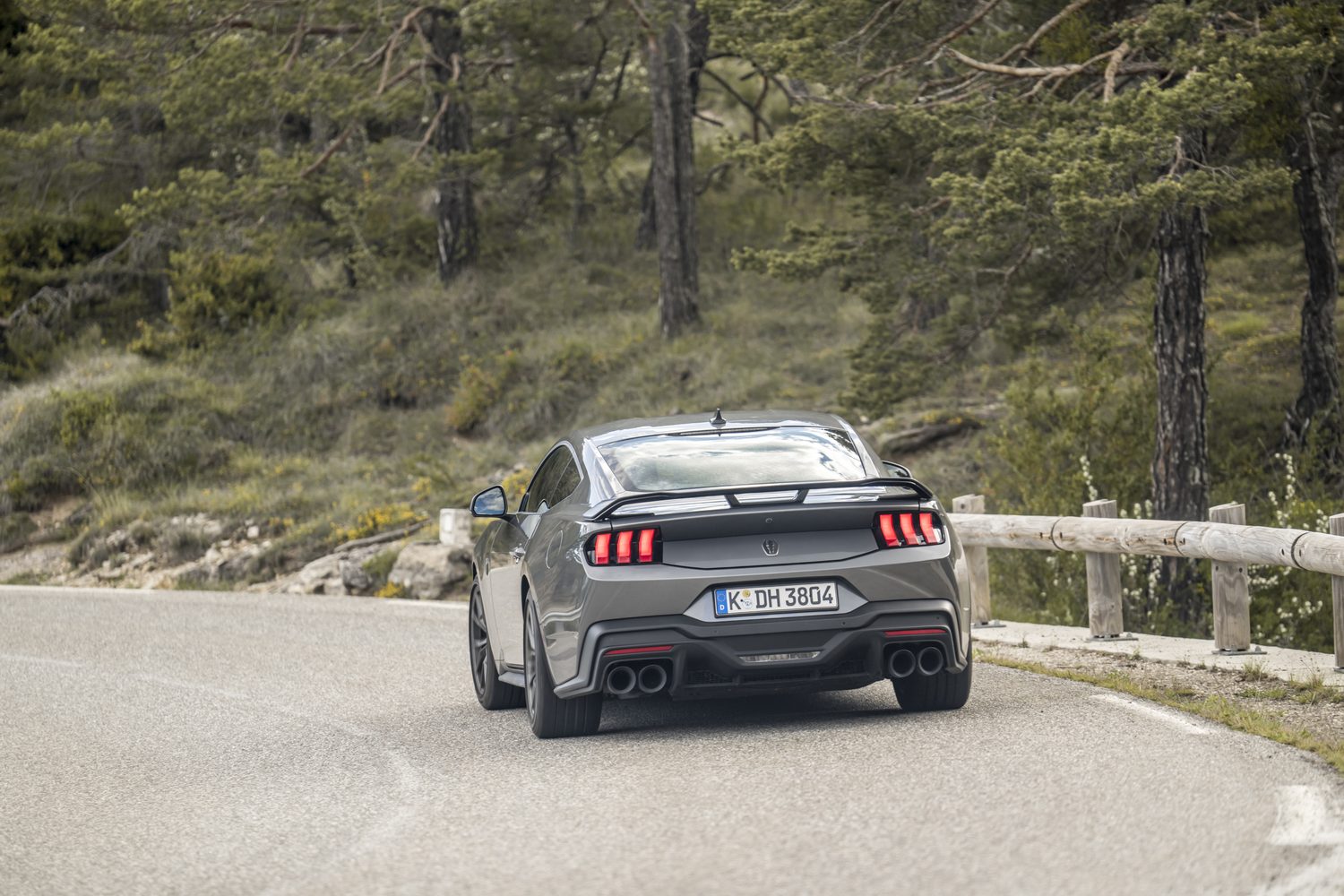
It helps when the whole experience is overlaid with one of the last true great soundtracks of the internal-combustion age. The Coyote V8 is an engine which deserves even more praise than it gets, because it’s not just all about the sensational, sublime noise. It does low-revs, burbly torque in the best possible way, just like any self-respecting American V8 always should, but if you stick with it and reattune yourself to the fact it’s not redlined at something stupidly low, then you suddenly realise what a gem of a powerplant this is.
It revs cleanly, linearly and eagerly to its lofty redline, the 5.0-litre really revelling in going to the giddy heights of 7,000rpm and more. Do so, and you’ll not be complaining about the speed the Ford can serve up. If anything, it feels even faster than its thoroughly decent on-paper numbers suggest. And, coupled up to the sensationally heavy-duty Tremec manual - capable of flat-upshifting and rev-matching on downshifts to make any driver look like a hero behind the wheel - there are few driving experiences left in the world still capable of matching up to the sheer thrill of a hard-charging Mustang.
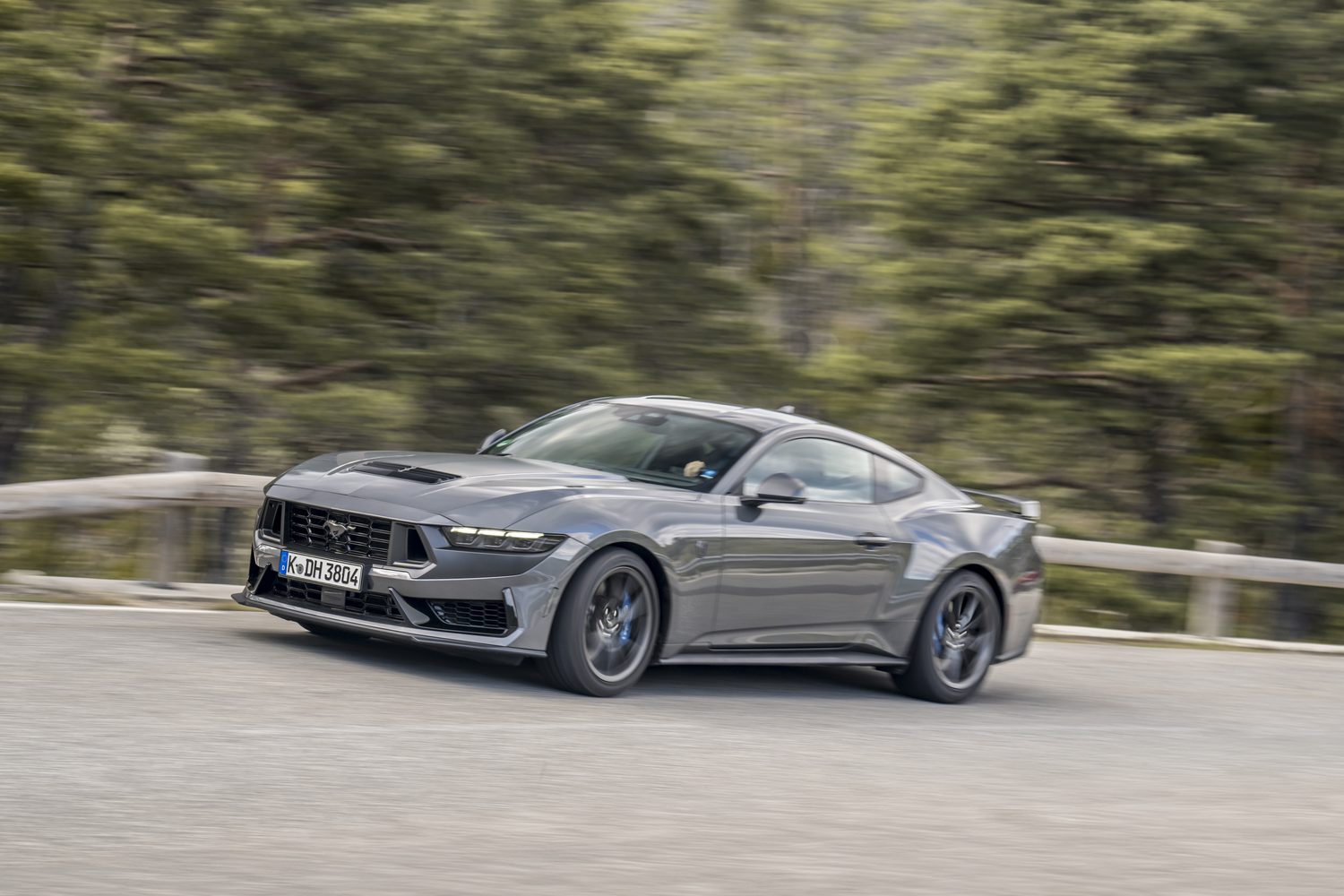
The truth is that the Ford Mustang is still not as sharp and as capable as something like a BMW M4 or a Porsche 718 Cayman, if you’re about the very extremities of driving engagement - things like steering feel and brake bite and corner turn-in and so on. But, by the same score, this is no big, lazy, lardy coupe that’s completely out of its depth if you start asking its chassis serious questions. In fact, it feels geared beautifully for European tastes and the Dark Horse also gives the impression that it would be mega on track, where you could push it even further and even harder than you ever can on the road. But, what the Mustang still has, and what it has always had, is charisma in spades, and that’s something that’s incredibly hard to put a price on these days.
What you get for your money
The new Ford Mustang isn’t showing on the Irish website yet, so it’s not clear whether it will come here officially or not. It is, of course, heading to the UK, following Ford’s decision to sell the previous-generation car in right-hand-drive format for the first-ever time from 2015 onwards, but either importing one from there or buying one here (if it arrives) will not be a cheap venture. Even the most efficient model emits 274g/km of CO2 from its V8, which means it will incur the maximum, hefty rates of both motor tax and VRT.
Summary
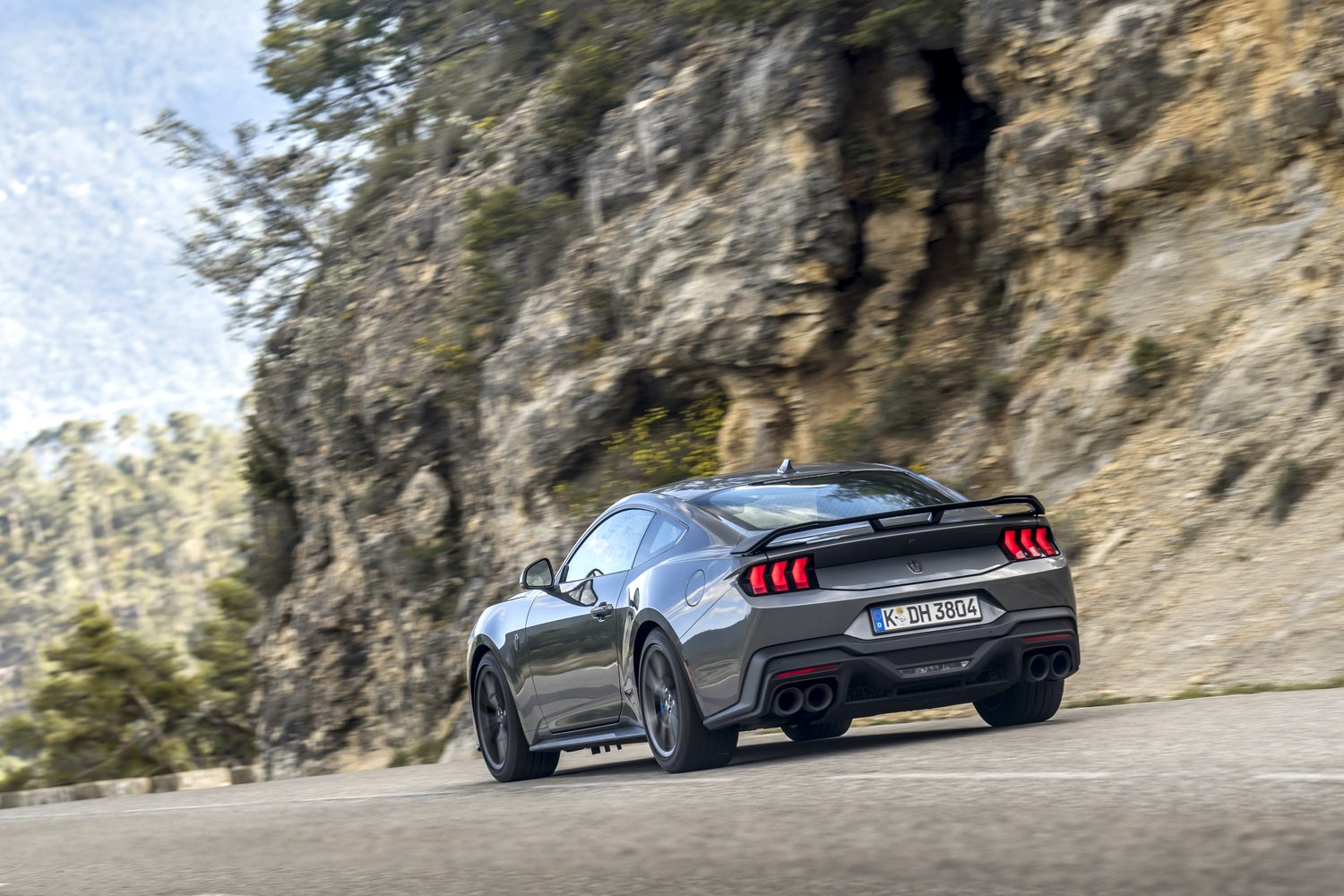
What could be the Mustang’s most fatal flaw - its lack of concession to any sort of environmental concerns, plus its obvious wish to hark back to a long heritage and distant past - is also what makes it such a breath of fresh air to see it back for a seventh outing. So, look at it this way: there are plenty of electric cars and hybrids out there to cater for you and other people who want to do their bit in reducing their carbon footprint, sure. But if what you’re after is a big-hearted, V8-powered, normally aspirated sports coupe with a manual gearbox and rear-wheel drive, there is only one place to go. Yet is that what makes the Mustang Dark Horse great? That it’s the only car of its type available? No, what makes it great is that it’s a simply fabulous thing to drive, warts and all; a true motoring icon, happily soldiering on into 2024 and beyond. And we, for one, are thoroughly delighted that this is the case.

